As our West Africa tour continued through Benin, the subject of voodoo kept coming up. After all, Benin is where voodoo, or Vodun as it is known here, first began. It is recognised as an official religion and is followed by about 60% of the population. Even people who would consider themselves to be Christian or Muslim generally follow voodoo practices as well.
Voodoo is seen as totally normal in Benin. It has none of the negative connotations we in the west normally associate with it. Voodoo is more than a belief system. It is a complete way of life, affecting culture, philosophy, language, art, dance, music, and medicine.
In this article
Voodoo Spiritual World
Vodun means ‘spirit’ in the local Fon and Ewe languages. The divine creator in voodoo is Mawu or Mahou. She is an older woman, a mother, gentle and forgiving. She is the god who owns all other gods.
Mawu’s masculine counterpart is Legba, believed to be a very old wise man who walks with crutches. In statues and images, he is represented as a phallus or as a man with a prominent phallus. When looking at the statue pictured here, one of our group quipped that it was no wonder he needed help to walk! Legba is the most powerful of all voodoo divinities. He is the guardian of the door of the spirits so it is only through Legba that it’s possible to contact other gods.
There are about 100 other voodoo divinities who all represent different phenomena. For example, there is Gou, the god of war and blacksmiths, and Sakpata, the god of illness, healing and earth.
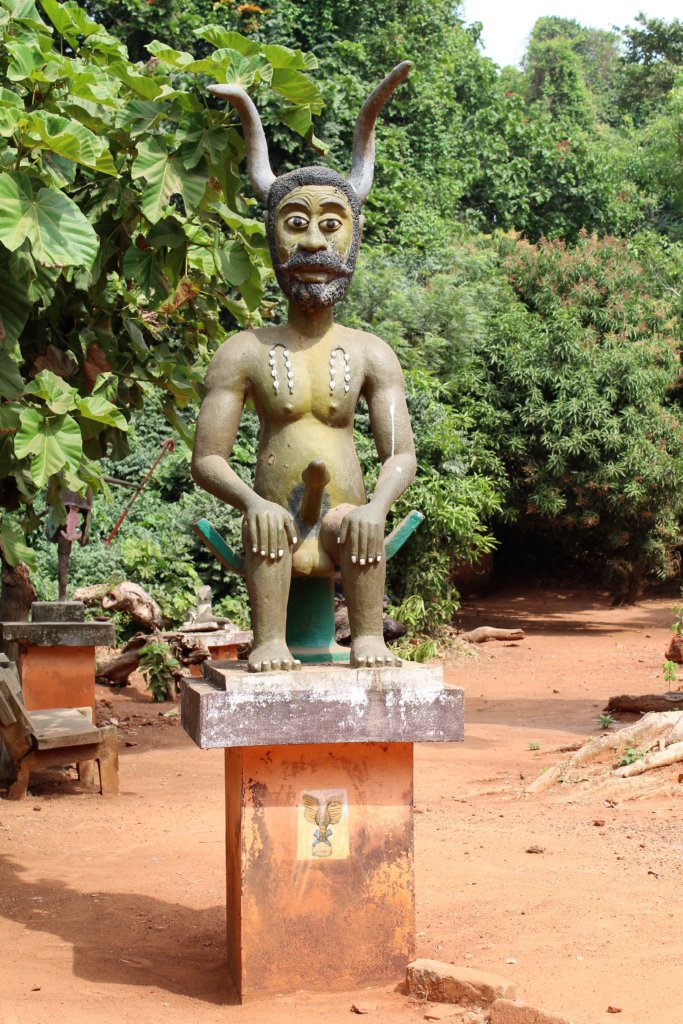
Voodoo Rituals
Vodun talismans (statues, human and animal body parts), called fetishes, are often combined in the construction of shrines or altars used to call forth specific deities and their associated powers. These shrines often ooze with candle wax, palm oil, feathers and the blood of sacrificed animals. The fetish origins of worship which form the basis of voodoo, predate most religions by as much as 10,000 years.
Voodoo priests ask the divinities to intervene on behalf of ordinary people. They sometimes ask for offerings to sacrifice to the god; a chicken, a goat, or a sheep, perhaps. Each animal is used for a specific ceremony. Other more mundane objects are also used in religious ritual. This is explained by the fact that all creation is considered divine and, therefore, contains the power of the divine. This is how herbal remedies are understood. No object possesses any sort of power, though, until it has been blessed by a voodoo priest.
Followers of voodoo hire a voodoo priest once every seven years to perform a good fortune ritual for themselves and their family.
Voodoo in Benin Today
White Magic
Voodoo adherents in Benin stress that they have nothing to do with sorcery or black magic. They associate such practices with the type of voodoo followed in Haiti and other parts of the Caribbean. They see this as a corruption of true voodoo, begun by slaves taken from West Africa. People don’t stick needles in effigies to cause misfortune to their enemies. Our guide, Emmanuel, told us that this was pure Hollywood fabrication. He did say, though, that voodoo priests don’t only use herbs as remedies; sometimes they use them to poison bad people! He didn’t see any contradiction here and went on to tell us that voodoo in Benin is white magic used to summon the good spirits from their ancestors.
Voodoo Day
Since 1996, Voodoo Day has been celebrated in Benin on January 10th each year. It is a national holiday with people all over the country taking part in festivals and ceremonies involving endless singing, dancing, drumming and drinking.
We were driving down through Benin on Voodoo Day this year. As we passed through villages, the air of excitement was palpable. People were buying live chickens and goats to sacrifice. Others had dead animals or animal parts, often on sticks, to be used in voodoo rituals. There was the sound of drumming everywhere we went.
Voodoo Day celebrations often continue for a week or more. We were able to observe, and take part in, a voodoo ceremony a couple of days after the official bank holiday.
Voodoo Fetish Market in Abomey
One of the biggest voodoo fetish markets in Benin is in Abomey. We were shown around by Constance, a Dahomey prince. It was really quite shocking to wander around the stalls seeing animal heads of every description, dead birds, tortoise shells, crocodile snouts, hippos’ feet, pigs’ penises, snakes, whole chameleons, skulls, bones, skins, and other indistinguishable items. Everything was dehydrated, so there was no smell and there were no swarms of flies as you might expect. Nevertheless, it was unnerving. Constance told us that all the animals had died a natural death before being preserved. I’m not sure I believe him! He also told us that puppies and kittens in cages on the market were for sale as pets and had nothing to do with voodoo. Again, my credulity was being tested!
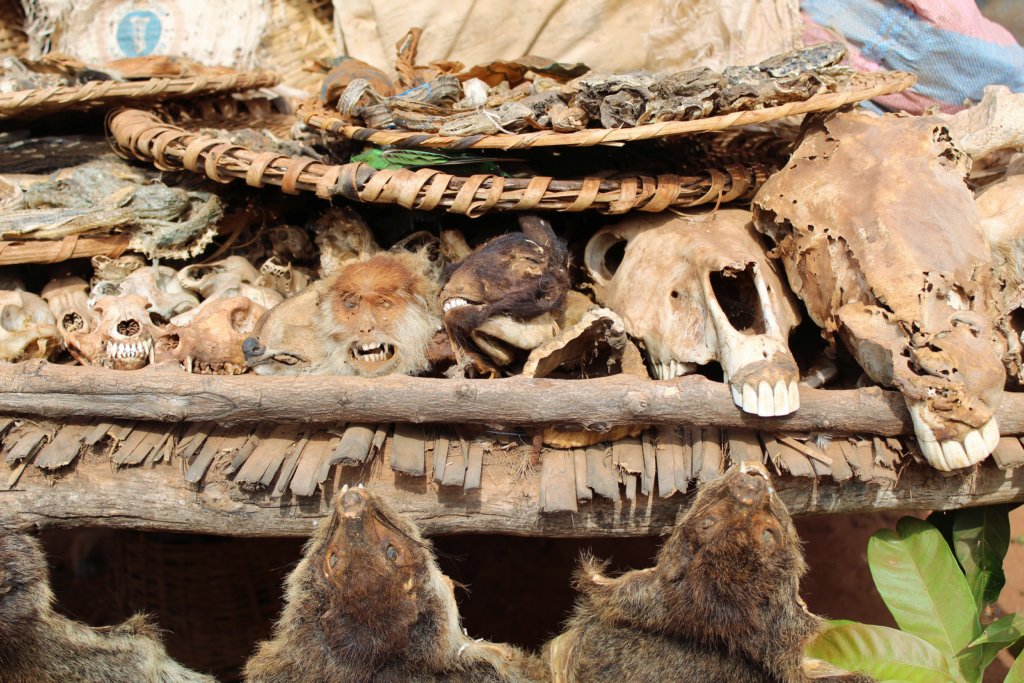
Ouidah
Ouidah is the spiritual capital of Benin, home to many voodoo priests and the voodoo pope, the voodoonou. It is where Voodoo Day celebrations began and is now home to the annual International Voodoo Festival which attracts 10,000 visitors from home and abroad, particularly France, the USA and the Caribbean.
Python Temple
The Python Temple in Ouidah sits, incongruously, across the road from a large Catholic church, but, as we’ve learned already, worshippers probably go from one to the other with no qualms whatsoever! The temple is home to around 45 pythons who appear to have been drugged to keep them sleepy. Visitors can have their photos taken with one of the creatures draped around their neck.
Ouidah means ‘python’ in the local language and the snake is revered as one of the most important voodoo deities. Adherents of voodoo believe that pythons won’t bite humans. However, if a human kills a python, even accidentally, he or she will die. They can reduce the chances of this happening by bringing the python’s body to the temple where it is put in a coffin, given a proper funeral and buried in the cemetery.
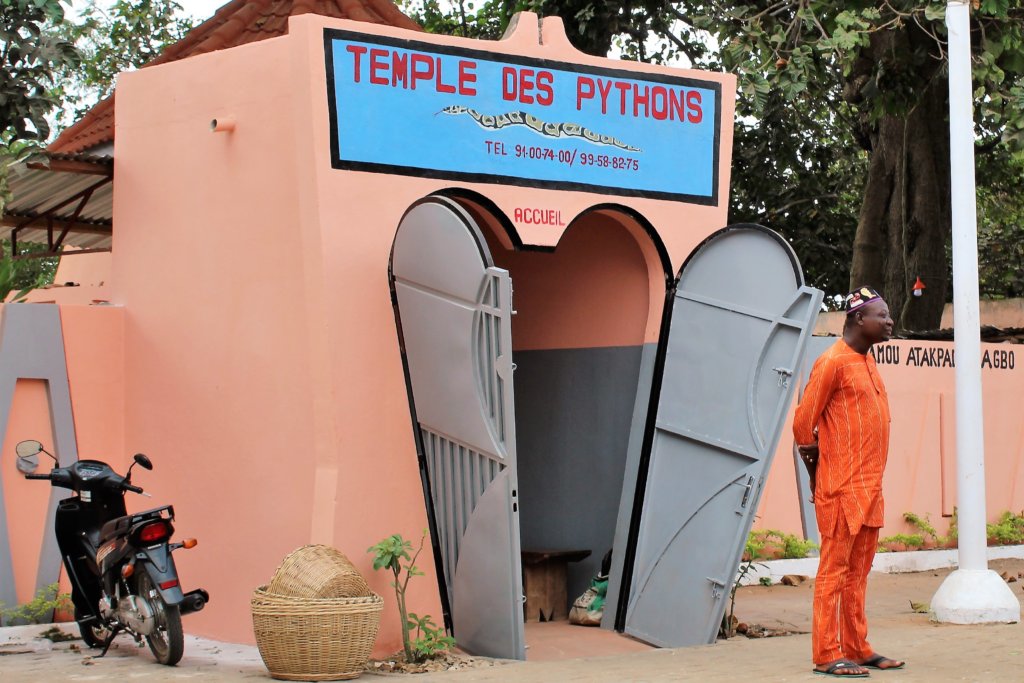
International Voodoo Festival
Delegates from all voodoo communities in Benin and some from abroad gather to pay homage to the voodoonou. The festivities begin with the slaughter of a goat in the Python Temple. People then process along the slave road three kilometres to the beach. They are led by the voodoonou who stops to pray at voodoo statues along the way.
Once at the beach, festivalgoers drum, dance and sing. Some adherents become possessed by the invoked spirits and fall into a trance. There are horseriding and magic displays. People wear colourful costumes and masks. Some commit acts of self-mutilation, cutting their bodies with knives and then pouring neat alcohol into the wounds. Led by the voodooshi (the female equivalent of the voodoonou), women worshippers perform a sacrifice to the sea goddess, Mami Wata. Some whip themselves into a frenzy, strip off and beat their bodies with their fists or wooden clubs.
Sacred Forest, Ouidah
There is a legend that King Kpasse, the first king of Ouidah, turned himself into a tree. Over the centuries, this tree has gained religious and spiritual significance. In 1991, ahead of the first International Voodoo Festival, the area around the tree was landscaped and statues of voodoo gods were erected. It is now a place of pilgrimage for adherents of voodoo from Benin and further afield. It was also on our itinerary!
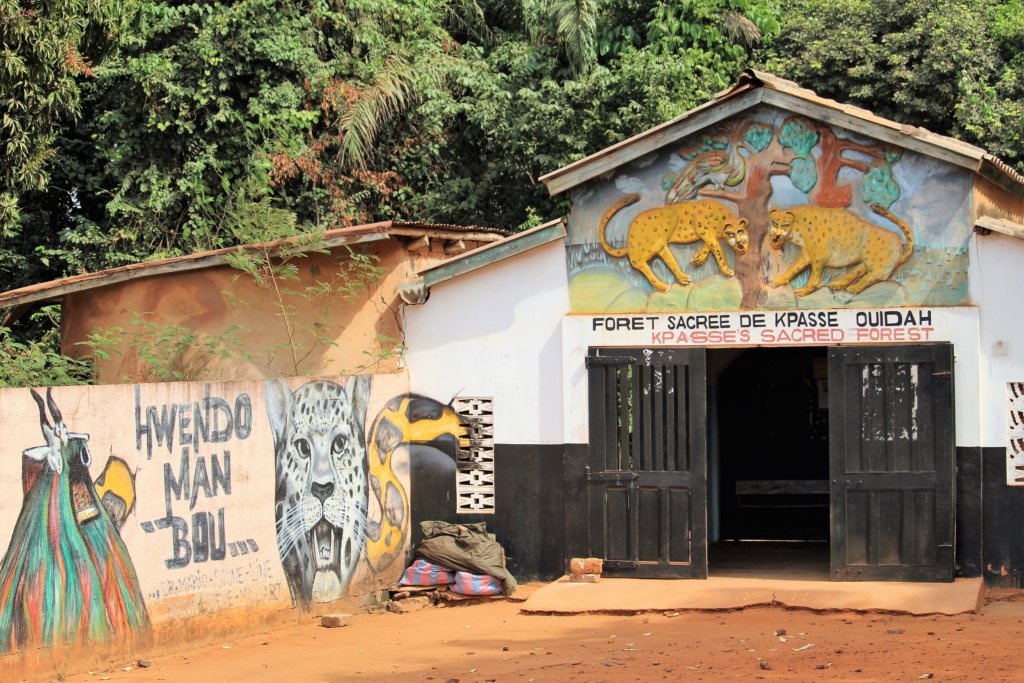
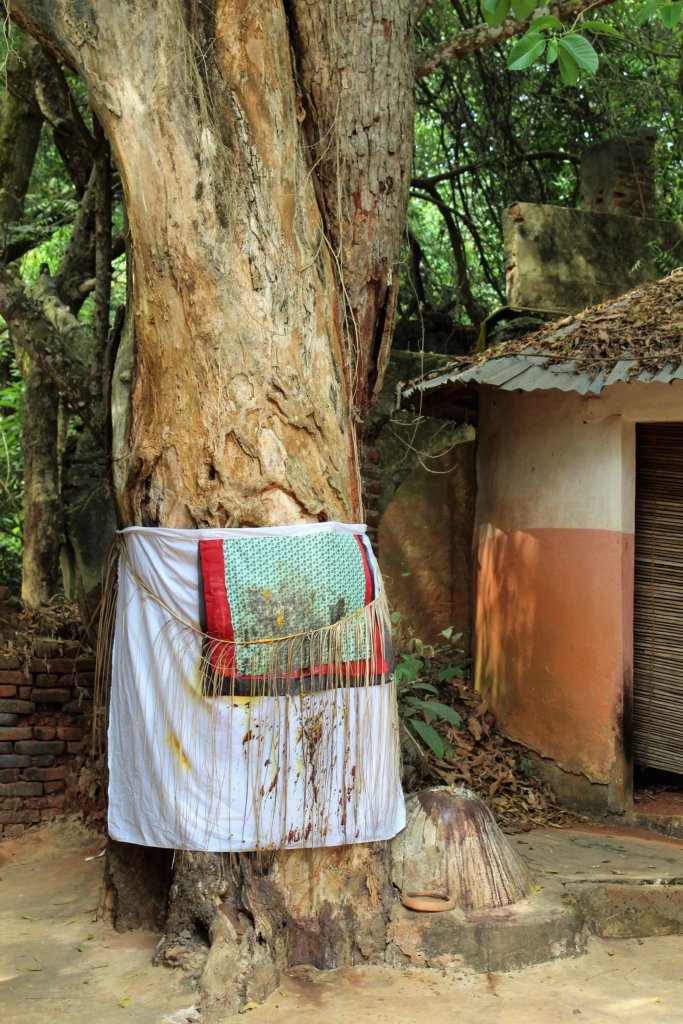
Twins
Twins, dwarves and albinos are amongst the most revered people in voodoo and are feted wherever they go. Twins, in particular, are considered a huge blessing for a family. In Ouidah, we visited the site where an annual twins festival takes place. People who have lost a twin sibling gather together to remember their brother or sister and give thanks for their lives. It is thought that, judging by the numbers in attendance, that many women lie about losing a twin, such is the kudos in having two babies.
Grand Popo
Grand Popo, on Benin’s Atlantic coast, is another centre for voodoo. Most inhabitants follow the religion and it was here, a few days after Voodoo Day, that we witnessed a voodoo ceremony for ourselves.
Village Cleansing Ceremony
In the village of Heve on the banks of the Mono River near Grand Popo, we witnessed a village cleansing ceremony and, towards the end, we were invited to take part. This wasn’t put on especially for us. It is a ceremony conducted at intervals throughout the year to keep the village free of evil and to ward off malevolent forces. Every villager either took part in proceedings or watched it from the sidelines.
The ceremony began with rhythmic drumming. A group of local men and boys drummed non-stop for two and a half hours, sweat pouring from their faces as the beat got faster and faster as events reached a climax. Women danced throughout. They looked joyous. They were clearly happy to be part of the ceremony which would keep their village safe from harm. Some danced with babies strapped to their backs. The stamina and energy of both the drummers and the dancers held us in thrall.
Once the music was underway, the stars of the show, the Zangbetos, emerged from their hiding places to do their work. The Zangbetos are the traditional voodoo guardians of the night or night watchmen. They act as an unofficial police force patrolling the streets, tracking down criminals and bringing them to justice. They are highly revered. Their costumes are made of brightly coloured straw and resemble haystacks. I say ‘their costumes’, but, in fact, local people believe that there are no humans under the outfits – only spirits of the night that inhabited the earth before man evolved. At times during the ceremony, ‘miracles’ happen which prove this theory. The costumes are lifted and all you can see is a plant or a small animal or a bowl. Thus, the myth is perpetuated that these inanimate objects are moving the Zangbetos around.
These ‘miracles’or magic tricks don’t just happen. First, the Zangbetos have to dance. They spin around really fast to enter a trance-like state which allows their bodies to be inhabited by spirits. The spinning is believed to have the power to cleanse the community of evil and their performance protects the village against thieves and malicious people. The miracles happen to prove the power of the Zangbetos. If the magic tricks succeed, the village cleansing will be successful, too.
Making the people in the costumes disappear isn’t the only ‘miracle’ to happen during the ceremony. The Zangbeto’s helpers grind up beer bottles and eat the powder without coming to any harm, or walk or broken glass without bleeding, or brand themselves with hot knives without burning. All of these things prove their power.
We were invited to join in. They demonstrated their power again by making it impossible for six big strong men from our group to move a Zangbeto, yet making it very easy for three of the girls! The villagers were very impressed; I think they enjoyed us dancing with them at the end of the ceremony, too! They were even happier, though, that their village was protected once again.
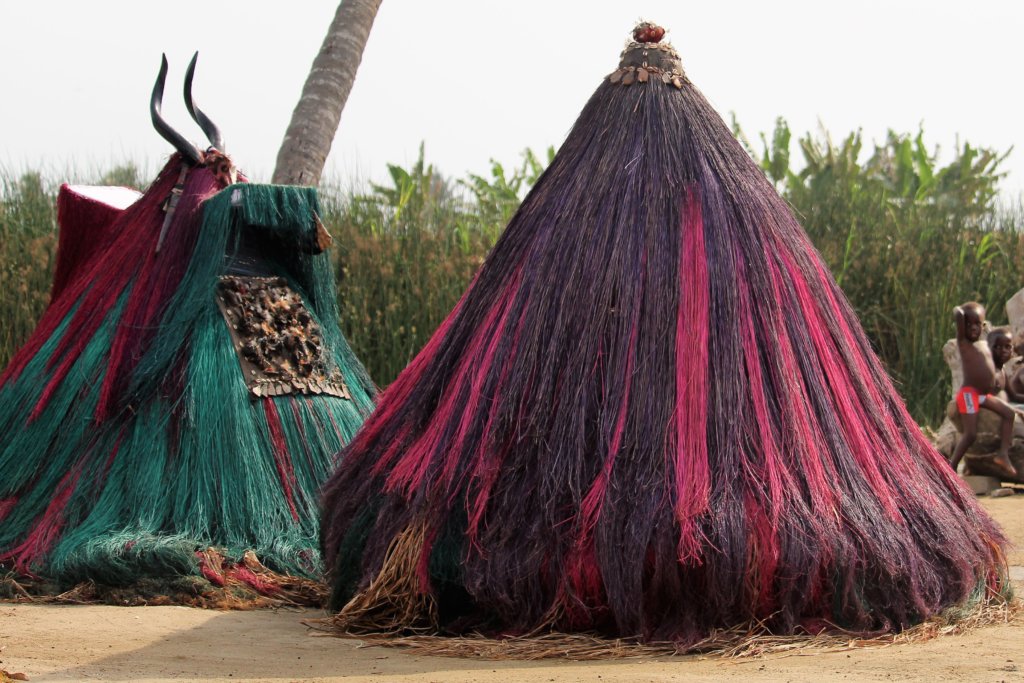
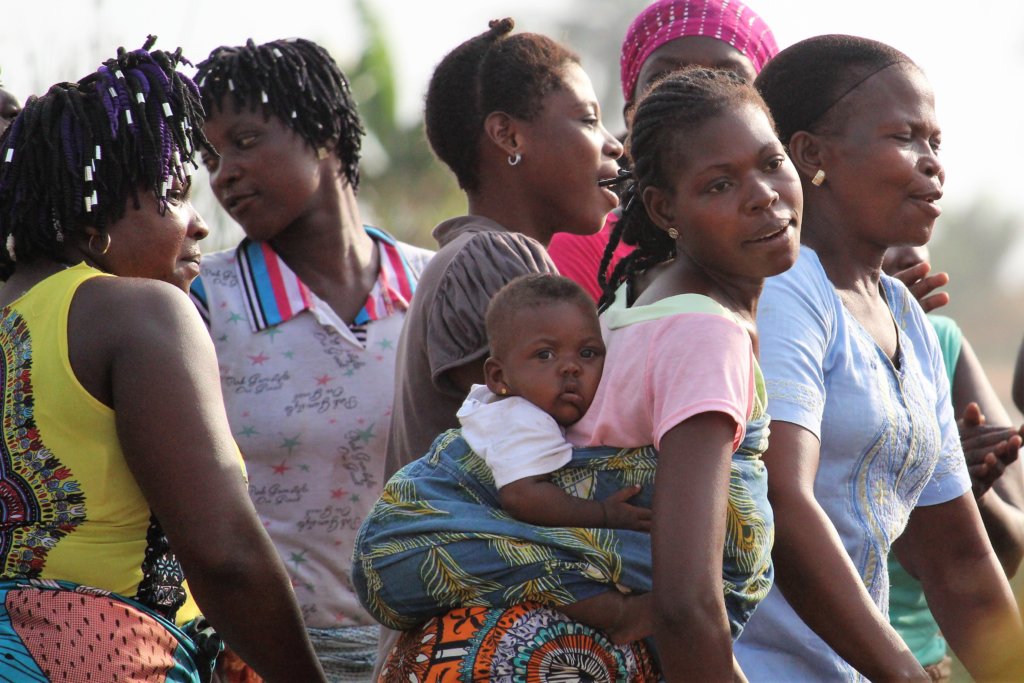
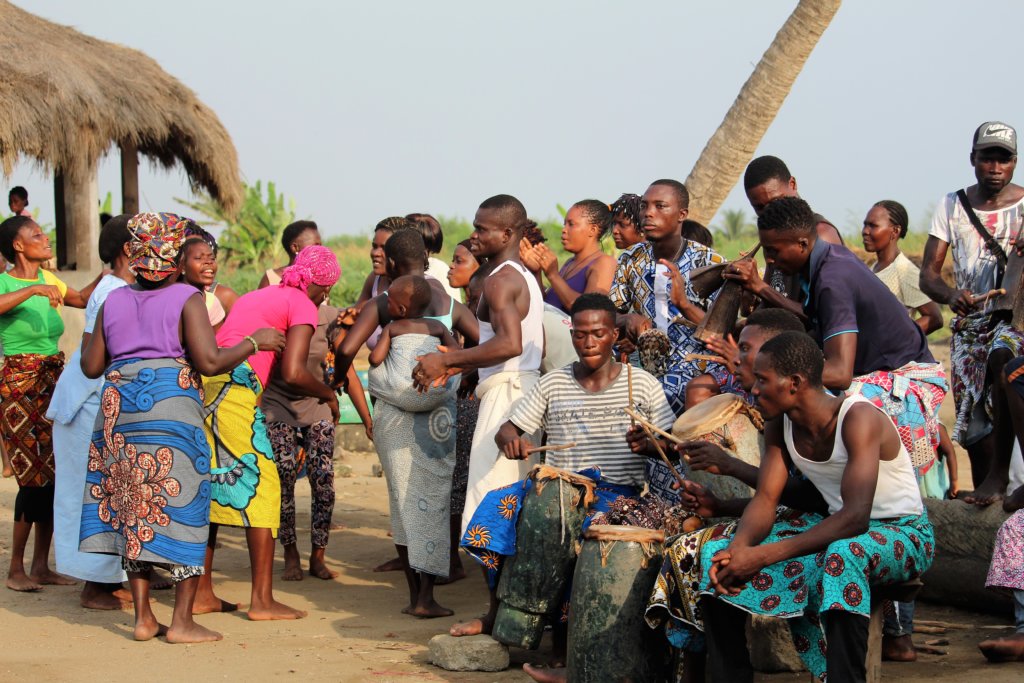
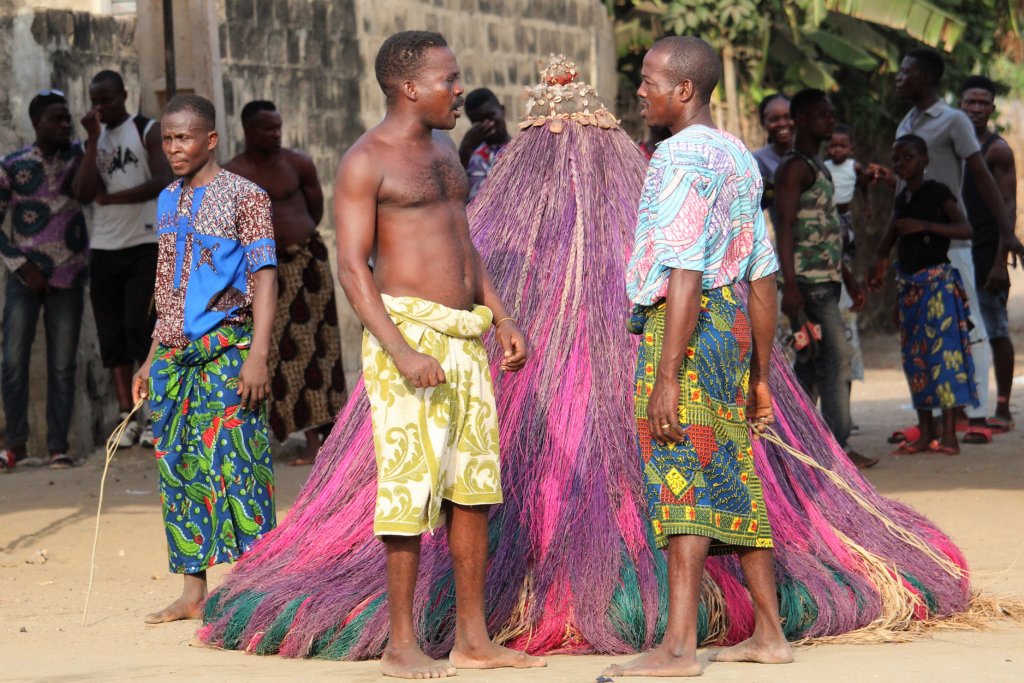
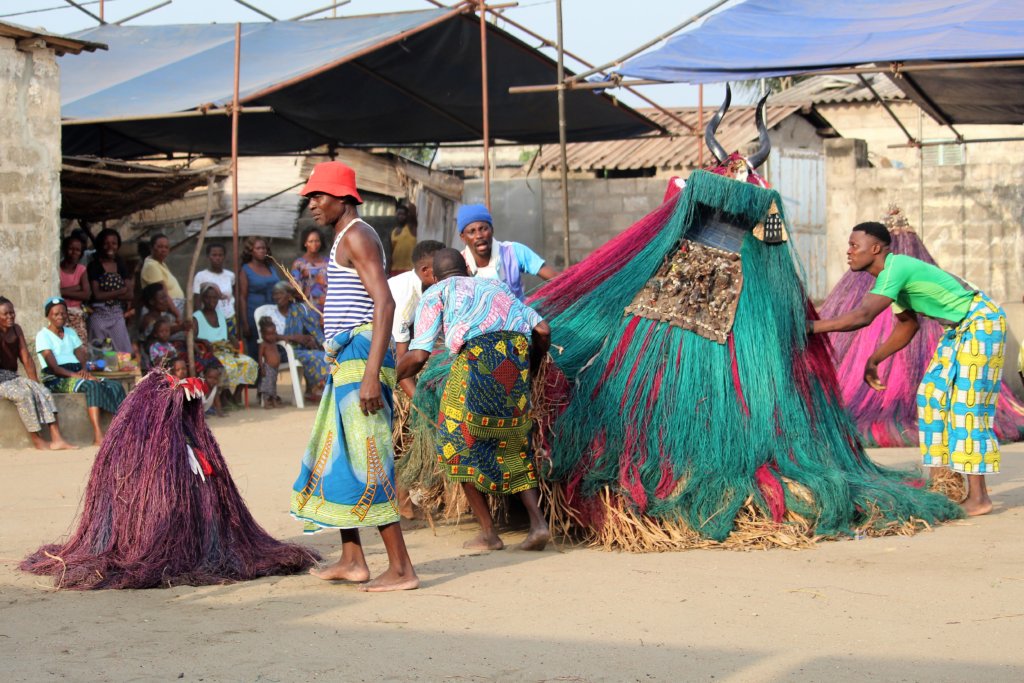
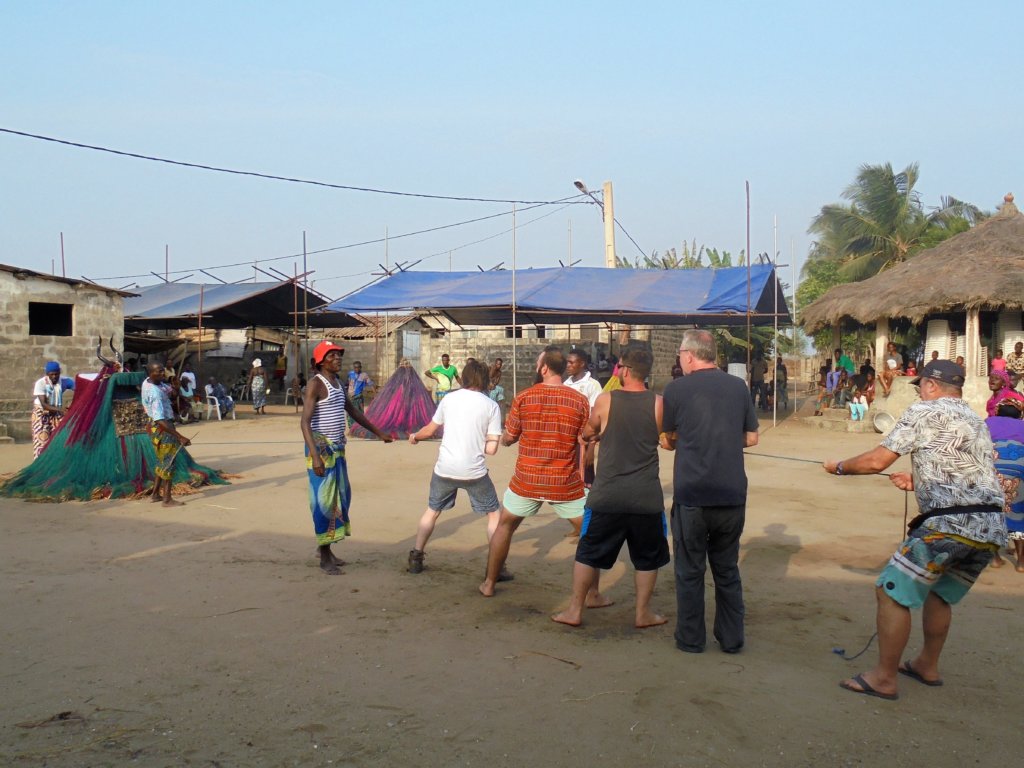
The Voodoo Village of Heve
The morning after the ceremony, we returned to Heve for a guided walk. We were encouraged to make a wish at a voodoo shrine. We had to seal the deal with a shot of powerful local spirit. We were told that if our wish came true, we must return to Heve and sacrifice two chickens at the shrine. I made a wish which couldn’t possibly come true – ever!!
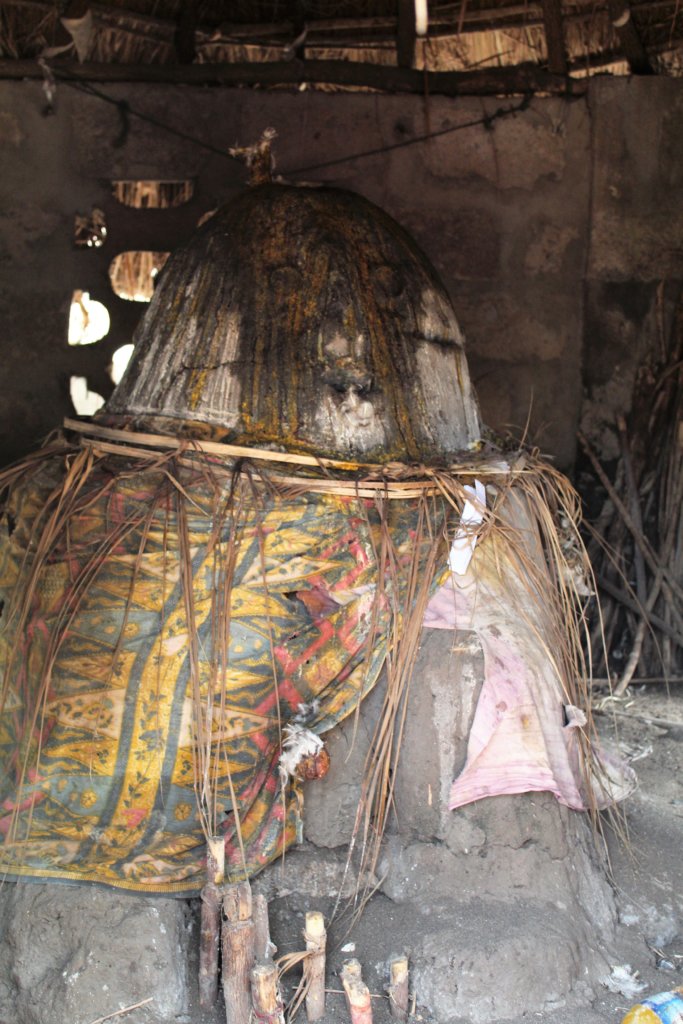
CLICK HERE TO READ MY BENIN TRAVEL GUIDE
READ MORE ABOUT BENIN!
BOOK YOUR OWN TOUR OF WEST AFRICA!!
IF YOU’VE ENJOYED THIS ARTICLE, PIN IT!!
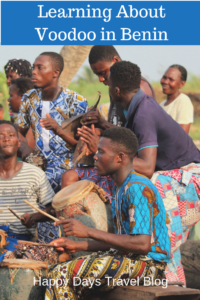
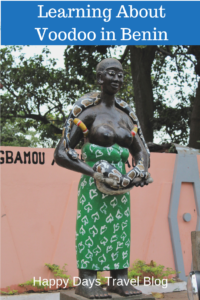
Disclosure: This post contains affiliate links. If you click through for more information, or to make a purchase, it may result in a small commission coming my way. Please note that there is no extra cost to you associated with this. Thank you so much for supporting my site.
Join our mailing list

Sign up to receive our monthly newsletter. Keep up with what we're doing and be the first to receive special offers and insider tips.

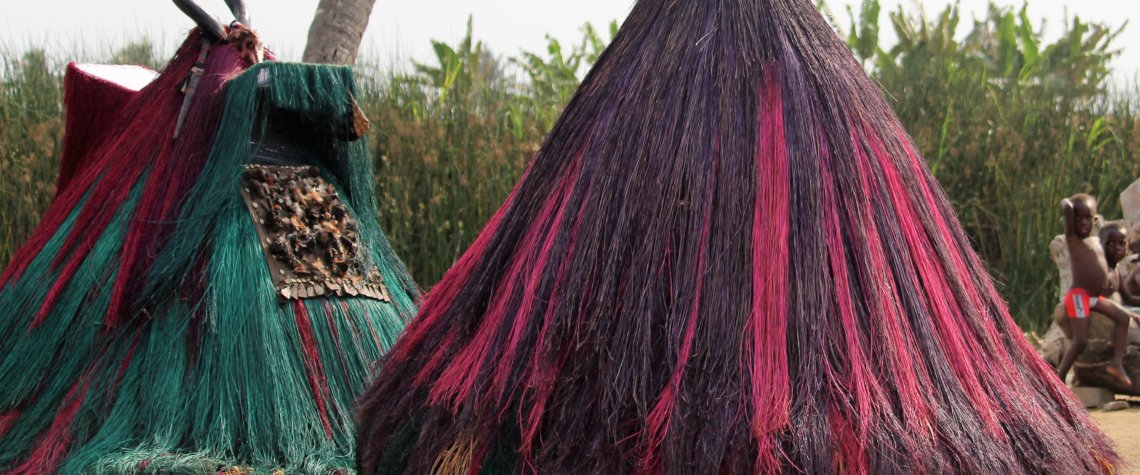
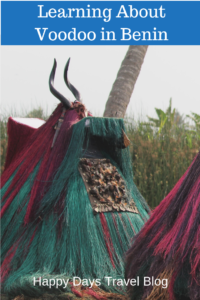
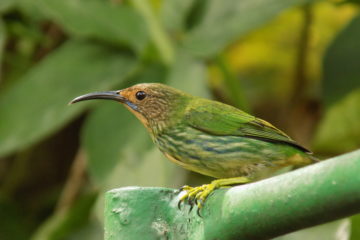
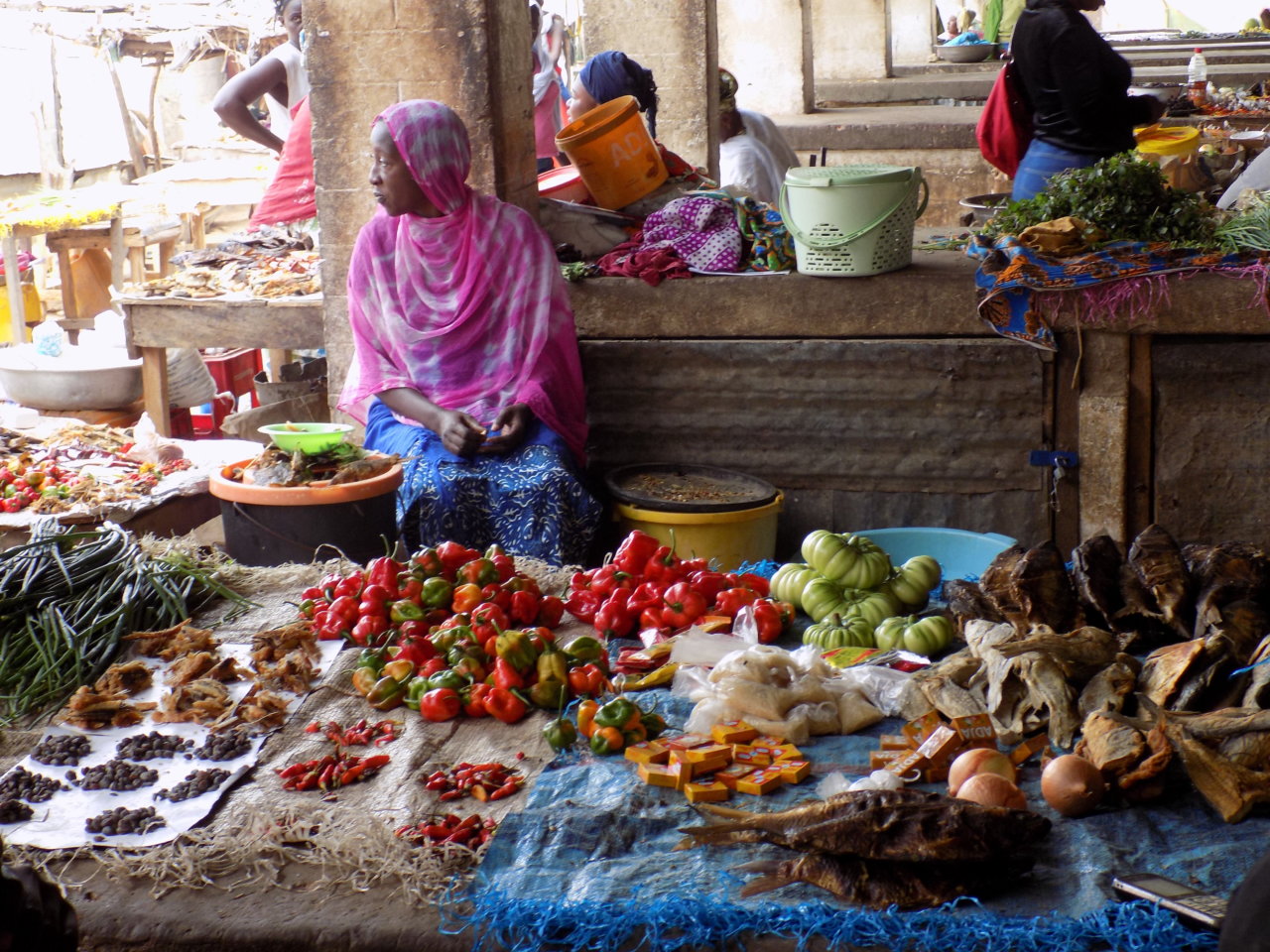
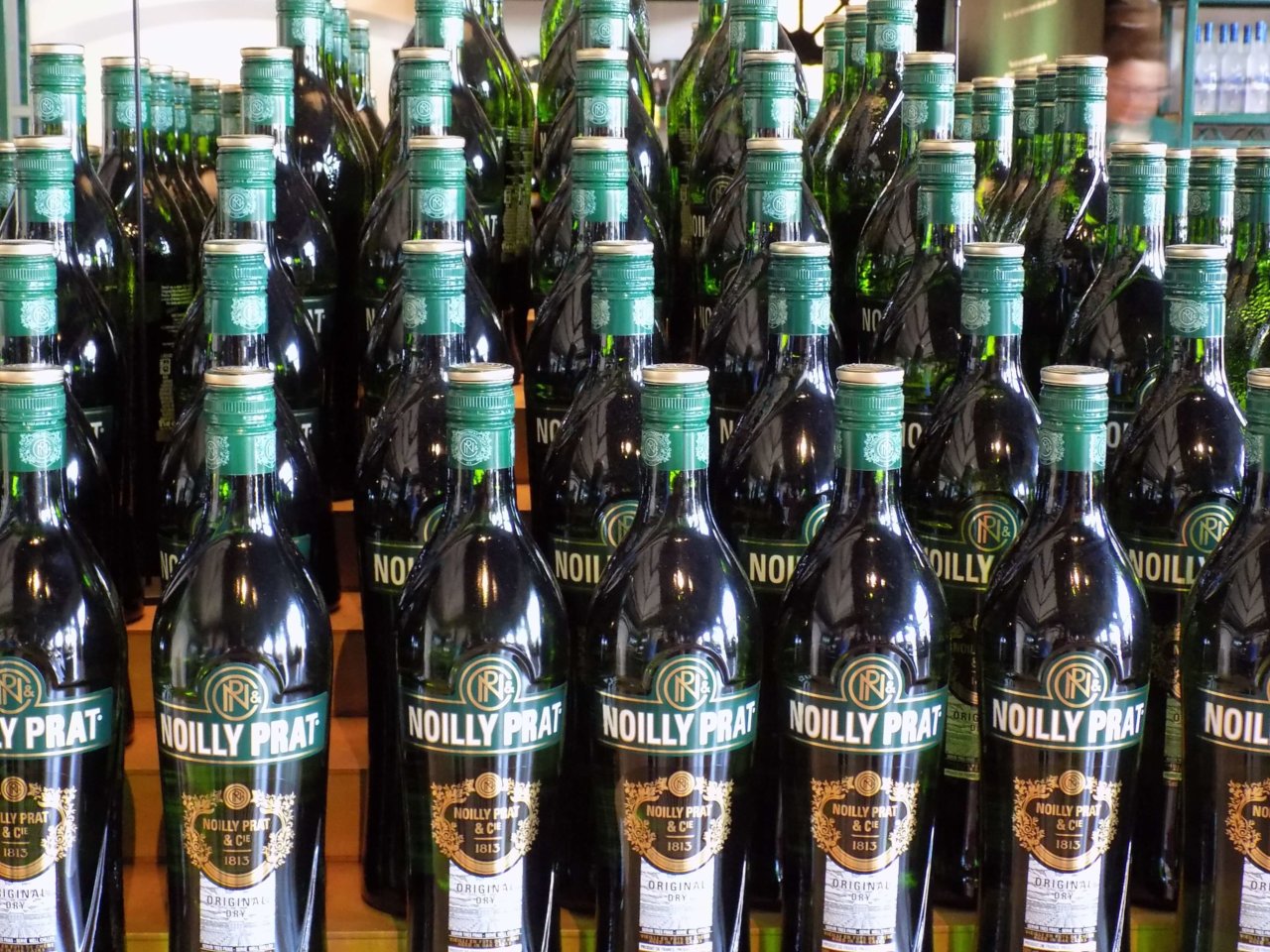
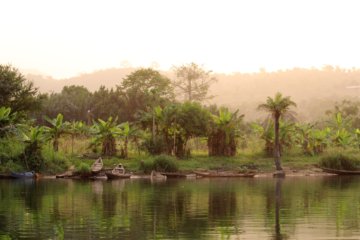
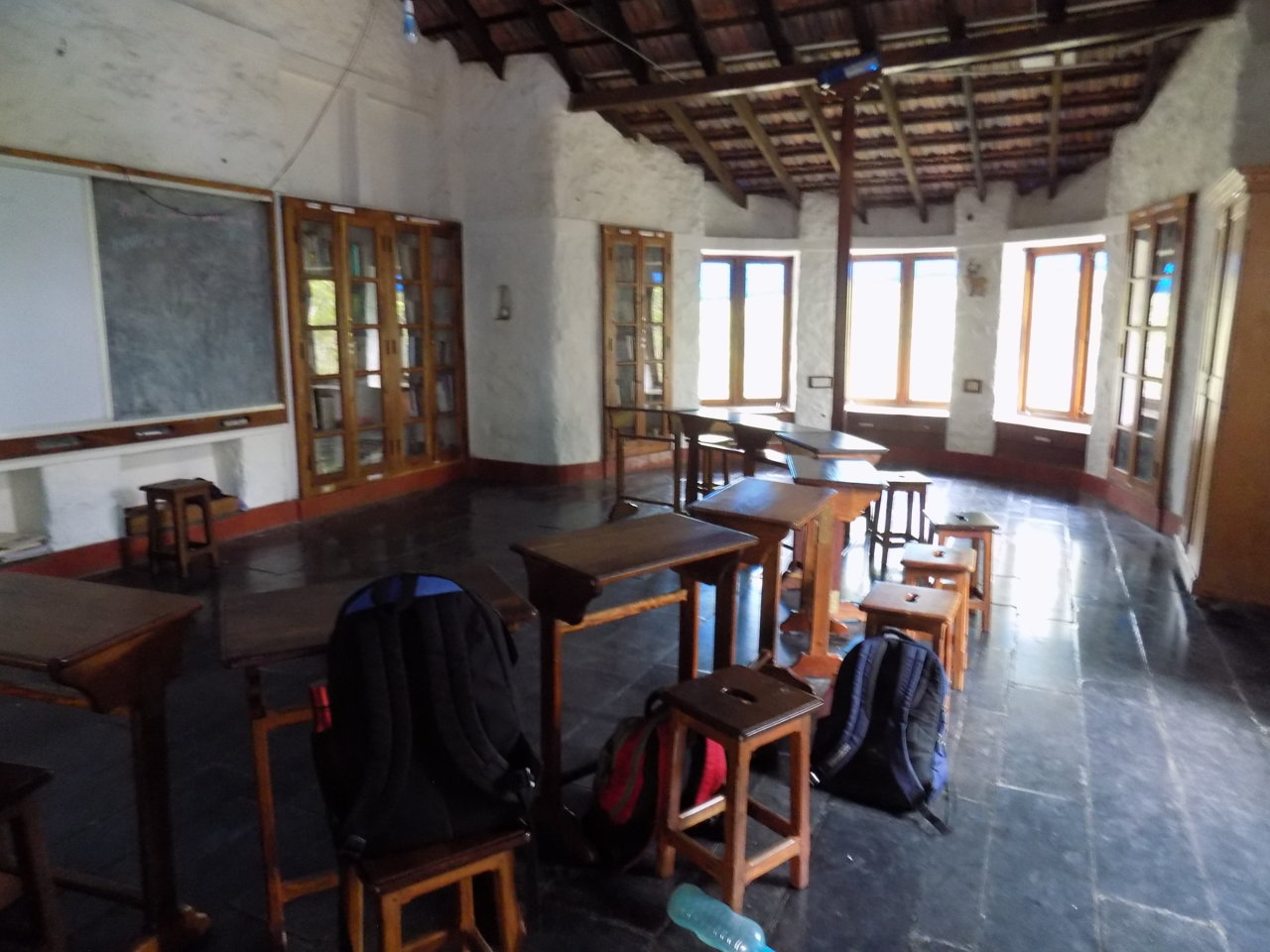
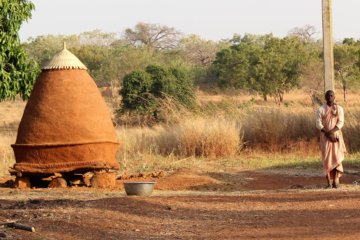

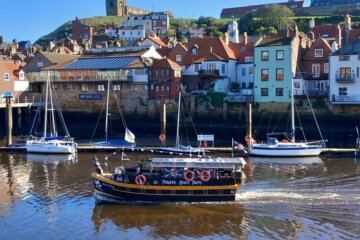
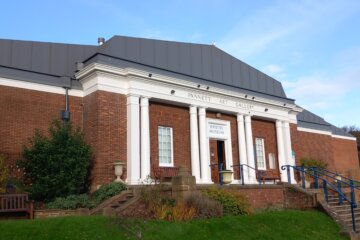

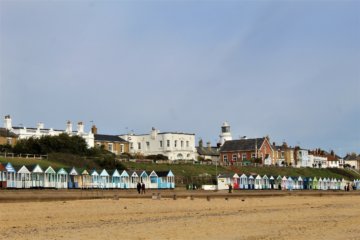
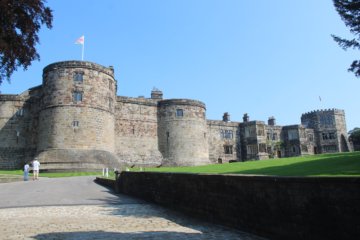
Incredibly interesting adventure. International Voodoo Festival…
I have not even heard of this … Thanks for sharing!
Absolutely fascinating! Thank you for this very extensive review of Benin and the practices of Vodun.